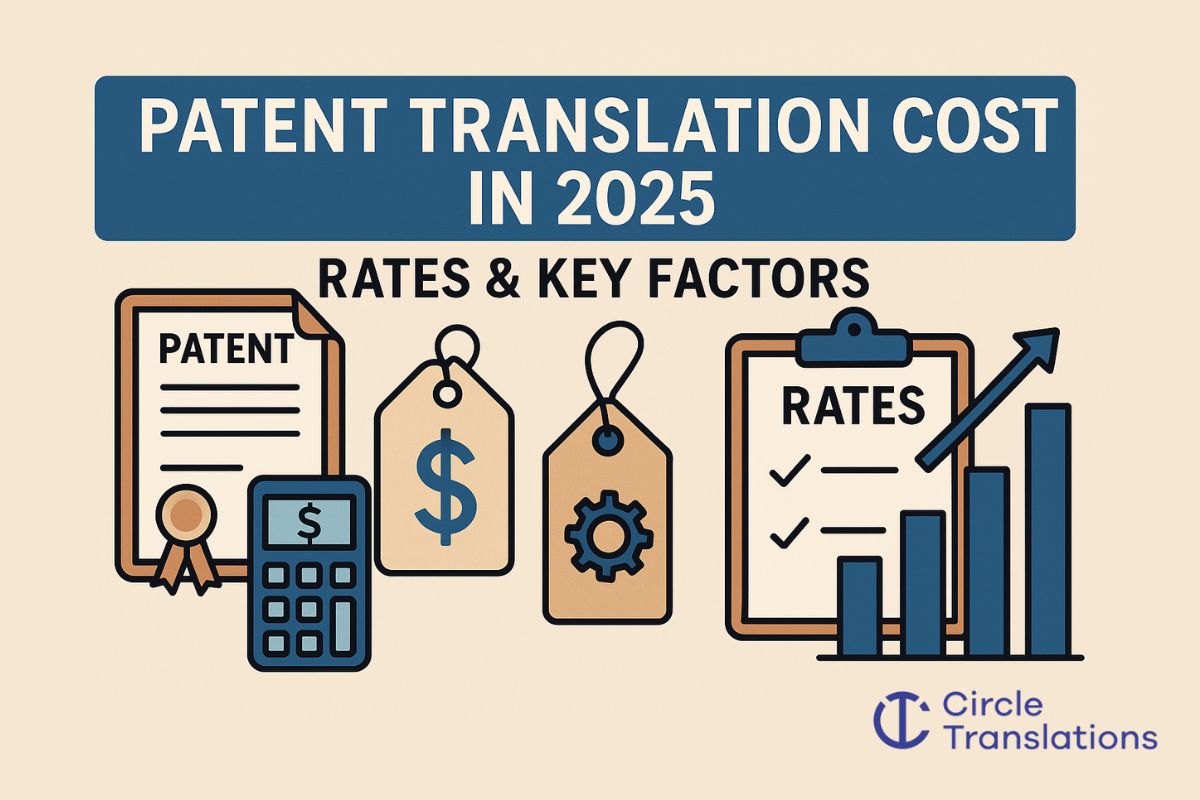Closed captions are like a magical friend for your TV or video. When you’re watching your favorite TV or movie, those words will occasionally appear at the bottom of the screen. What’s the big deal, though?
Imagine you’re trying to watch something, like a TV show or a video, in a place where it’s really loud, or you can’t turn up the sound because you don’t want to disturb others who are sleeping. Closed captions can help in this situation. They show the spoken words and frequently describe musical sounds on the screen.
But that’s not all! Closed-captioned meanings are superheroes for the deaf and hard of hearing. They make sure everyone, regardless of hearing ability, can enjoy the same content. Whether you’re in a crowded café, trying to understand heavy accents, or have hearing challenges, closed captions are your trusty sidekick.
Understanding closed captioning terminology
Imagine you’re watching your favorite TV show, and you see words at the bottom of the screen. That’s closed captioning, and it’s super helpful for many people. Let’s dive into some important terms to understand it better.
- What’s Closed Captions?: They are like superheroes for your screen. They display text on the screen to help people who are deaf or hard of hearing understand what’s being said in a video. It’s like having a book on the screen to read along with.
- Subtitles: Subtitles are like translations for your video. They display text on the screen, but they’re about converting one language to another. People who want to watch foreign movies or understand accents often use subtitles.
- Open Captioning: Open captions are shown at all times, in contrast to closed captions. They cannot be turned off. They’re like permanent subtitles. They help everyone, not just those with hearing issues.
- Transcription: This is like turning spoken words into written words. It’s helpful for making scripts or for those who can’t hear but can read.
They are for those who can’t hear, subtitles are for translating, open captions are always on, and transcription is turning talk into text.
Why use closed captions?
Imagine watching a video, but you can’t hear the sound. That’s where closed captions come to the help! They’re like magical words that pop up on your screen, making videos understandable for everyone.
For a number of reasons, closed captions are essential. First of all, they enable deaf or hard of hearing people to access videos. It’s a means of valuing and embracing everyone. But there’s more! SEO benefits overall from closed captions as well. Search engines adore text, and captions give them additional information to chow down on. This implies that it will be easier to find your video online.
User engagement is another big win with closed captions. Think about it – you can watch videos in noisy places, during meetings, or when you’re sneaking a peek at work. Captions let you follow along without disturbing others.
Don’t just take our word for it – numbers back this up. Studies show that videos with captions get more views, more shares, and longer watch times. They improve understanding and keep viewers hooked.
They help you make search engines your friend, and keep viewers glued to your content. So, use closed captions because they make your videos better.
How does closed caption work?
Closed captions perform a remarkable feat in enhancing the accessibility and understanding of video content. The process unfolds in two essential steps, resembling a well-coordinated dance between human effort and technology. Initially, manual captioning comes into play. This involves individuals diligently listening to the video’s audio and transcribing the spoken words. These unsung heroes act as the real-time scribes, ensuring that viewers can read along with the dialogue, just like magic words on the screen.
The second step elevates the role of technology, where automated speech recognition (ASR) enters the stage. ASR systems, akin to robotic assistants, can analyze the audio and convert it into text. This technological wizardry is impressive but isn’t without its quirks; it sometimes makes errors, underscoring the significance of the human touch to validate accuracy.
However, a crucial aspect of closed captions is timing and synchronization. The captions must seamlessly match the video, much like a perfectly timed musical backdrop. An incongruous display, where, for instance, a greeting appears a minute after it was spoken in the video, disrupts the harmony between the spoken words and the visual context. Closed captions are a collaborative effort, where machines work in unison.
What are the benefits of closed captioning?
Closed captioning is like a secret superpower for videos and shows. It’s not just about words on the screen; it’s a game-changer!
- For creators, it’s a golden ticket. Imagine reaching more people with your content. Closed captioning makes it happen. First, it’s like a warm hug for those who can’t hear well. The deaf and hard of hearing can now enjoy your stuff. And it doesn’t stop there.
- Captioning is like a magic key that opens doors for everyone. When you add captions, your video becomes more understandable. Think about accents, mumbling, or noisy backgrounds. Captions clear the fog and make your content crystal clear.
- It’s not just about understanding; it’s about getting hooked. When viewers see those words, they stay longer. Your content becomes a magnet for their eyes. It’s like telling a gripping story; they can’t look away.
- Lastly, closed captions boost your content’s star power on the web. Search engines love those captions. It’s like putting a spotlight on your video in the darkness of the internet. More people discover it!
Viewers get more clarity and the deaf and hard of hearing get a front-row seat to the entertainment party.
Closed caption formats
Closed caption formats are like special subtitles that make videos accessible and engaging for everyone. How are closed captions generated? Well, there are two main types: open captions and closed captions.
Open captions are the friendly storytellers in the movies; they are always there, showing the dialogue and sounds on the screen. They’re used when you want everyone to see the captions, like in public spaces. Open captions make content inclusive and reach a wide audience.
On the other side, closed captions function like a secret code. At any time, you can turn them on or off. Because they give you the option to decide if you want captions, they are ideal for TV shows, web videos, and movies. You can watch your favorite shows in this manner without disturbing others. Additionally, each format has its own perks and quirks. Open captions ensure accessibility for all, but they might clutter the overall screen. Closed captions give you complete control, but you have to turn them on. The choice between these formats depends on where and how you want to use them. In a world filled with diverse audiences, closed caption formats help make sure nobody misses anything.
What is the difference between closed captioning and translation?
While watching your favorite show on TV, words appear at the bottom of the screen. That’s closed captioning but what’s the difference?
Closed captioning is like a helpful friend for the deaf and hard of hearing. It shows the spoken words as text on the screen. So if someone says, “Hello,” you’ll see “Hello” in writing.
Now, translation is like a language magician. It transforms what’s being said from one language to another. So if someone says “Hola,” you might see “Hello” in English.
Here are three key differences:
- Audience: Closed captioning is for people who can’t hear, while translation is for those who speak a different language.
- Purpose: Closed captioning aims to convey the exact words spoken, while translation focuses on making content understandable in another language.
- Accessibility: Closed caption translation helps non-English speakers access content they couldn’t understand otherwise.
What is the difference between open and closed captions?
Imagine you’re watching your favorite TV show or video, and you see words at the bottom of the screen. Those words help you understand what’s happening, even if you can’t hear the sound. These words are captions, and there are two main types: open and closed captioning.
Open captioning means the words are always on the screen, and you can’t turn them off. It’s like having subtitles that everyone sees. Why are they called closed captions? Simple, because they can be turned on or off easily and work like a secret code.
Furthermore, open captioning is great for public places like airports, where everyone needs to see the words. Closed captioning is handy for personal use, like when you’re watching a movie at home with friends who don’t want the captions. In the real world, open captioning helps in noisy environments.
What is the difference between open and closed captions?
Choosing the right closed captioning service might seem tricky, but fear not! Let’s break it down into easy-to-understand steps.
- Accuracy Matters: First and foremost, you want captions that accurately reflect what’s being said. Look for a service that prides itself on precise transcriptions.
- Time is of the Essence: How quickly do you need those captions? Some services offer super-fast turnaround times. Check if it fits your schedule.
- Accessibility Rules: To ensure everyone can enjoy your content, check if the service follows accessibility laws. This includes provisions like the Americans with Disabilities Act (ADA).
- Pricing: Budget matters! Get quotes from different providers and compare. But don’t let low prices compromise quality.
- Consult Potential Captioning Providers: Ask questions. Ask them about their process, technology, and experience.
- Reviewers’ comments and references: What do they have to say about the service? To learn more about their reputation, read reviews and contact referrals.
- Individualization: Do you have any unique formatting or style requirements? Make sure the service can adjust the captions to your tastes.
It’s all about making content accessible and enjoyable for all. So, make your choices wisely, and caption!
What is the difference between open and closed captions?
Closed captions, to put it simply, are words that magically appear on your TV or computer screen while you’re viewing a show or a movie. These words make it easier for those with hearing loss to comprehend what is being shown on the screen.
Think about watching your favorite show but being unable to hear the performers conversing. Closed captions can help in this situation. The conversation, sound effects, and even the music are displayed on the screen as text. It’s like having a sly assistant who relays what everyone is saying!
Lastly, they make sure that everyone may enjoy and comprehend what is happening in the world of TV and films, regardless of their hearing abilities. Therefore, the next time those words appear on your screen, keep in mind that they are there to ensure that no one misses out on the pleasure.
FAQs
- Is closed captioning done by a person?
Most definitely yes! Real individuals frequently perform closed captioning. They type out the words they hear while watching videos. To ensure that everyone can appreciate and comprehend the content, even if they cannot hear it all, it is like putting a personal touch.
- Is Closed Caption accurate?
Although they occasionally manage to be correct, closed captions aren’t always reliable. They occasionally made mistakes, especially when utilizing words or accents that were challenging. They are unique tools for understanding what is stated on TV or in videos and offer amazing insight into your show.
- Is it better to transcribe or caption?
They are like two best pals at a movie night. Transcribing turns speech into text for a quiet read, while captioning adds text to videos, making it a party for everyone! Which one’s best depends on your audience and the show you’re hosting.
- Why is closed captioning important?
For those who are hard of hearing or deaf, closed captioning functions like a superhero. It’s significant because it gives videos words, enabling universal accessibility. It acts as a helpful hand to make sure no one is left out.
Subtitles

Professional and Accurate Subtitle Services for your Videos.
- Video subtitles specifically tailor-made for improving accessibility.
- Using highly experienced subtitlers with years of industry experience.
- Professionally written and expertly timed.
Translation

We help the world’s top companies translate their content in over 73 languages!
- We localize content for internet websites, games, travel, cryptocurrencies, and more
- Expand your global audience by adding different languages.
- We work only with qualified translators and experienced content creators
Audio translation

Ensuring full accessibility for Blind and visual impaired audiences.
- Visual descriptive events as they occur in the video.
- Working with top audio describers to perfectly describe what is happening on-screen
- Professional sound recording.












